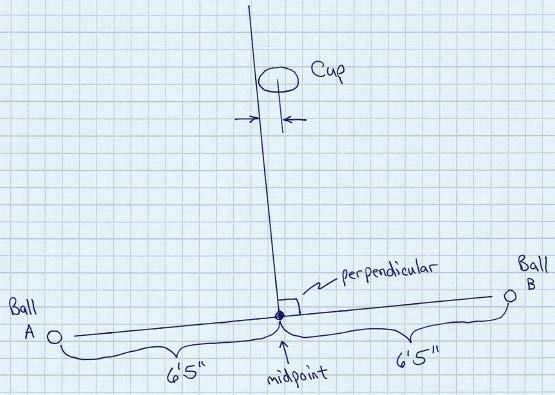Independent presidential candidate Robert F. Kennedy Jr. has privately apologized to a woman who accused him of sexual assault, saying he does not remember the alleged incident and that any harm he caused was “inadvertent.”
In a story published last week in Vanity Fair, the woman, Eliza Cooney, described inappropriate behavior and sexual advances from Kennedy when she worked as his family’s weekend nanny in the late 1990s, including an incident in which Kennedy approached her from behind and allegedly groped her in a pantry. At the time, Cooney was 23. Kennedy was 45 and married, with five children.
“I have no memory of this incident but I apologize sincerely for anything I ever did that made you feel uncomfortable or anything I did or said that offended you or hurt your feelings,” Kennedy wrote in a text message to Cooney sent at 12:33 a.m. on July 4, two days after her accusations became public. “I never intended you any harm. If I hurt you, it was inadvertent. I feel badly for doing so.”
He added, “If you feel comfortable, Id [sic] like to tell you this by phone, and preferably, face to face. I recognize that this might not be possible. I have no agenda for sending this text other than making the most sincere and ernest [sic] amends.”
Reached by phone on Thursday, Kennedy declined to comment on Cooney’s allegations or to elaborate on his message to her.
“The text message speaks for itself,” he said.
The message, which Cooney provided to The Washington Post and which The Post verified was sent from Kennedy’s cellphone number, has not previously been reported. It represents the candidate’s most detailed reaction to Cooney’s accusations.
In an interview with The Post, Cooney, now 48, voiced incredulity that Kennedy would claim not to remember the incident and said she believed his efforts to contact her were meant as damage control rather than a genuine expression of remorse.
“It was disingenuous and arrogant,” Cooney said of his message. “I’m not sure how somebody has a true apology for something that they don’t admit to recalling. I did not get a sense of remorse.”
She said she was also disturbed by Kennedy’s suggestion that they meet in person.
“Meet ‘face to face?’ What woman wants to do that?” Cooney said.
Kennedy, the son of former attorney general Robert F. Kennedy and nephew of former president John F. Kennedy, is poised to play an influential role in this year’s volatile presidential election. An independent candidate known for his conspiracist worldview and anti-vaccine activism, he has drawn a relatively small but passionate following among Americans who say they’re disenchanted with their major-party ballot alternatives. About 9 percent of registered voters nationally support his candidacy, polls show.
Despite his famous name, other prominent members of his family have disavowed his campaign, saying they fear he could divert crucial votes from President Biden in a close election.
After Cooney’s story appeared in Vanity Fair, Kennedy twice called her cellphone on July 3 and sent her a text the same day asking that she call him. Shortly after midnight he sent a second text message with his apology, according to screenshots from her phone.
Cooney — who has not had contact with Kennedy for years — said she was unsure how he obtained her number. She said she has not responded to his calls and messages.
Kennedy deflected last week when asked about the incident.
“I am not a church boy,” he said on the Breaking Points podcast. “I had a very, very rambunctious youth. I said in my [campaign] announcement speech … I have so many skeletons in my closet that if they could all vote I could run for king of the world.” Pressed on whether he denied Cooney’s allegations, Kennedy said, “I’m not going to comment on it.”
Cooney said she went to work with Kennedy in the fall of 1998 after babysitting over the summer for some of his nieces and nephews on Cape Cod. A recent graduate of Pomona College, she was interested in a career in environmental law. Kennedy was then the top attorney at Riverkeeper, one of New York’s premier environmental organizations.
Cooney said she worked weekdays as an intern at an environmental litigation clinic Kennedy led at Pace Law School, and over the weekends would look after his kids. She lived in the expansive home in Mount Kisco, N.Y., that Kennedy shared with his second wife, Mary Richardson Kennedy, who more than a decade later would die by suicide amid bitter divorce proceedings with her husband.
Weeks after she started, Cooney said, she was sitting in the kitchen with Kennedy and a Riverkeeper volunteer when Kennedy began running his hand up and down her leg beneath the table. She said she batted his hand away but that he persisted throughout the conversation.
They never spoke about it afterward, but Cooney wrote about the experience at the time in her journal, which she showed to The Post.
“It seemed like he thought I was somebody else or wasn’t paying attention,” she wrote. “Like he would come to every once in a while and snap out of it or I would move away. It was like he was on something or really tired or was missing Mary or testing me.”
Not long after that, she said, Kennedy showed up shirtless in her room one day with a large bottle of Kiehl’s, an expensive body lotion, and asked her to rub it into his back — explaining, she said, that his wife believed it to be the best brand of moisturizer. Cooney said the request made her uncomfortable but that she obliged, and he left afterward.
On a third occasion, she said, she was in the kitchen pantry after yoga class, looking for food to make lunch, when Kennedy silently approached her from behind and placed his hands on her hips. She said he then ran his hands up her body and along the sides of her breasts.
“I remember being like, ‘Oh my God, what is even happening right now?’” Cooney told The Post. “It’s very much like being quiet because you’re hiding from somebody under the bed or something, you know? That’s how I felt.”
At that moment, she said, a man working on renovations in the house came into the kitchen and made his presence known to Kennedy, saying something along the lines of, “Don’t do anything I wouldn’t do” or, “Don’t do anything you wouldn’t want your wife to know about.”
Cooney never spoke of the incident afterward with Kennedy, although she continued living in the house for several months and worked at the Pace Law clinic for another few years, completing a project on the history of the Hudson River.
“I felt as though if I walked away, all the investment I put in would be for naught,” she said. “It was my first job. I didn’t want that to be a failure. And it was for Bobby Kennedy, who was at the time a prominent environmental lawyer, which was the work I wanted to go into.”
But Cooney did not ultimately pursue such a career, she said, in part because of her negative experiences with Kennedy.
Several years ago, amid the #MeToo movement’s onslaught of revelations, she shared her story for the first time with her mother, Holly Cooney, who told The Post it was “horrifying to hear about, especially with your own child.”
Last summer Cooney consulted Elizabeth Geddes, a former federal prosecutor now in private practice. Geddes said the unwanted touching of her breasts that Cooney described constituted sexual assault, but that the criminal statute of limitations had passed. Cooney was still eligible — for a limited time — to bring a civil complaint under New York state’s Adult Survivors Act, but decided not to do so, concerned about the costs and duration of a lawsuit, as well as the potential blowback for herself and her family.
Geddes said this week that she considered Kennedy’s efforts to reach out directly to Cooney highly unusual.
“This is something that perhaps might make an offender feel better about doing it,” Geddes said. “But it’s hard to imagine that an apology such as this could provide any closure or other solace to somebody who was sexually assaulted in the workplace.”
Alice Crites contributed to this report.










